Egg Bag Lecture Notes, by Jeff Dial
Another classic of magic, egg bag routines feature a small cloth bag in which an egg keeps appearing and disappearing, even though the bag can be squeezed and shown to be empty. Most routines include audience participation in which the spectator can actually reach into the bag, find it empty, and a moment later the magician reaches in and pulls out an egg.
Descriptions of the egg bags were first published in the late 1600’s. By the first half of the 18th century it was in the standard repertoire of most magicians.
Think of the egg bag as an empty folded McDonald’s bag you keep in your glove compartment. When you are traveling and are, hungry you reach in the bag and take out a Big Mac and fries. That was in impact of egg bag on the 17th century audience. In the days before refrigeration and preservatives this was indeed a magical way of providing a meal for yourself when traveling and a whole lot easier than working.
The original bag was a large bag. Requiring 2-3 yards of fabric to make a double bag plus a load bag. Four or five pockets were sewn inside the bag (they are called purses, as pockets as we know them had not been invented). Each pocket would hold two or three eggs. It should be noted that the eggs of that day were much smaller than the eggs we get at the grocery store. There was a second duplicate bag used to hold a chicken.
The effect would be the production of eggs (food) from the bag. The finale is the supposed source of the eggs, a live chicken.
A good description of this type of bag can be found in Tarbell 5 (Lesson 68 The Magic of the Bambergs p. 354 “David Tobias Bamberg’s Egg Bag”).
In Tarbell it illustrates Bamberg with his arms spread at shoulder width with the inside corners of the bag resting on his finger tips and the bag coming down to his elbows. About 24” x 17”. Huge by today’s standards.


By the beginning of the 20th century what came to be know as the “Standard” egg bag had been popularized by Albini and bears his name. It was a double bag with the opening across the bottom of the bag.
Classification of Bags:
Egg bags fall into three general classifications. The first is the “standard” bag with a horizontal slit or opening at varying positions. The second is the Malini Bag with a diagonal slit at the bottom corner. The third are bags or mats that use the artifice of thread to cause the egg to appear or vanish.
There is a fourth method that relies on sleight of hand, droppers, and hold-outs. The effect is the same, but the bag itself is ungaffed.
The Tarbell Egg Bag – Made of plaid material and with a slit about 2” long about 1/3 of the way up from the bottom of the bag. The double wall of the bag is sewn closed at that point so that the egg won’t fall down to the bottom of the bag.
Other bags based on the Tarbell principle are Sterling/Mardo, Sachs, and Jack Miller. The main difference is the place where the pocket is positioned.
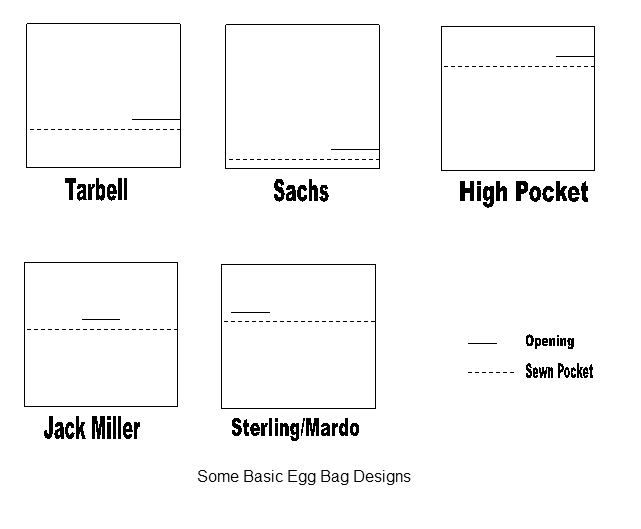
Other methods include The New Method Egg Bag that had an egg shell attached to the bag with a length of thread. By use of the thread the egg can be concealed. A Bamboo Mat with an egg shell attached with a thread is used to pour one egg at a time into a hat and then the hat is shown empty at the end.
The Net Egg Bag with a net along the bottom 1/3 to allow for the visible appearance of the egg. A Zipper Bag that the bottom can be zipped open. The No Pocket Egg Bag designed to fool magicians and used sleight of hand. The Tommy Windsor Golden Egg Bag – Looks like a bank moneybag. An egg bag hat – Abdul’s Fez. The Hen Bag – The cod explanation with a fake chicken inside. (U.F. Grant?)
The bag I have used for over 20 years is the Malini Bag. The difference is that the opening is at the corner and allows for some additional handling. It has the added advantage of its ability to be out of the performer’s hands when the spectator sees the bag empty and the spectator can take the egg out of the bag themselves.

The wonderful thing about any egg bag is that a routine can be developed to fit any performing style. My first routine was a comedy routine with a devil’s hank and a fake move under the arm. Billy McComb did a routine where he produces and vanishes a glass of whiskey. Peter Marucci does a routine with a plaid bag he uses to “store his golf balls”. Tom Mullica had a bar routine set to some crazy music that ended with a production of a bottle of beer. Payne has taken a very basic handling, changed the egg to a carved gourd, and wrapped it in a story about how this magical gourd came into his possession.
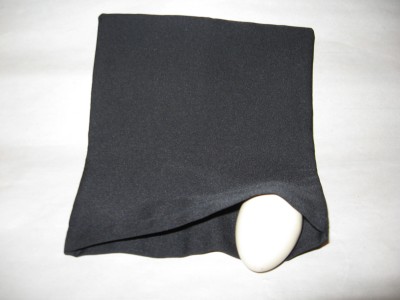
A Malini Style Egg Bag with Blown Egg
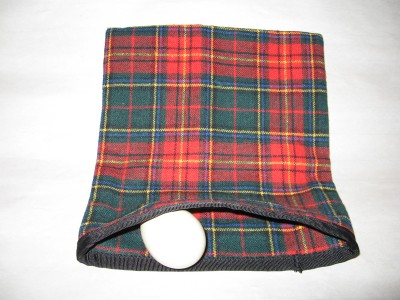
Tarbell Style Egg Bag with Wooden Egg
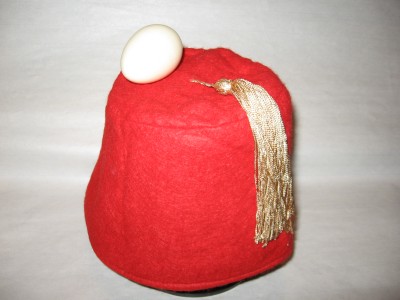
Norm Neilsen's Abdul's Fez; a unique Egg Bag Variation
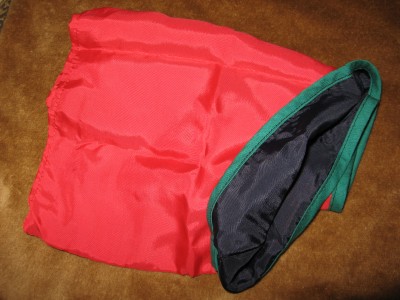
An unidentified Japanese Egg Bag of soft silky material
